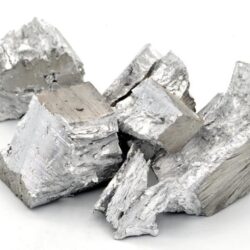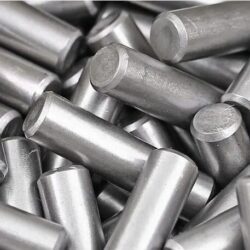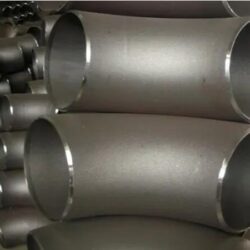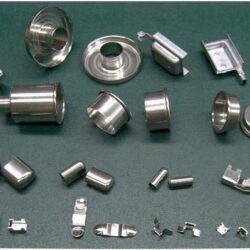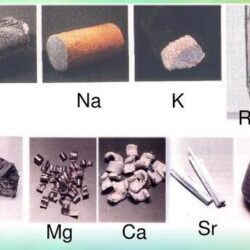A material is brittle if, when subjected to stress, it fractures with little elastic deformation and without significant plastic deformation. Brittle materials absorb relatively little energy prior to fracture, even those of high strength. Breaking is often accompanied by a sharp snapping sound.
When used in materials science, it is generally applied to materials that fail when there is little or no plastic deformation before failure. One proof is to match the broken halves, which should fit exactly since no plastic deformation has occurred.
While nearly all metals are malleable or ductile, a few—beryllium, chromium, manganese, gallium, and bismuth—are brittle. Arsenic, and antimony, if admitted as metals, are brittle. Low values of the ratio of bulk elastic modulus to shear modulus (Pugh’s criterion) are indicative of intrinsic brittleness.
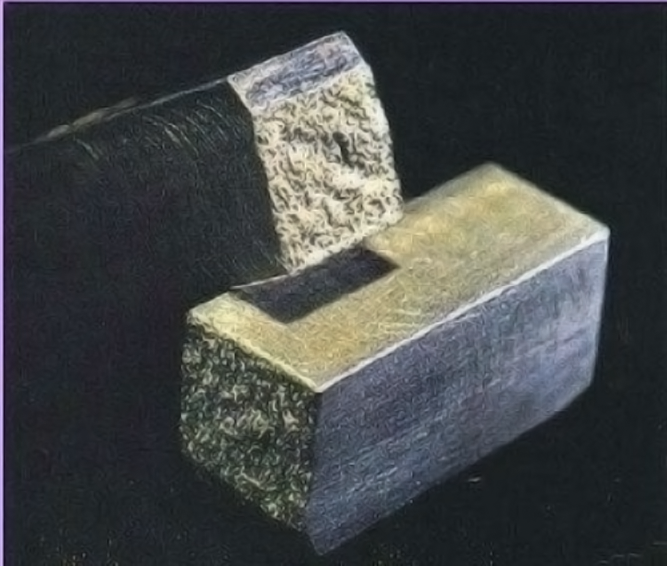
Metals which are brittle are basically alloy, pig iron, cast iron; steel with high carbon content is brittle.
An element is said to be brittle if it is hard but breaks easily with little force. All metals are hard, malleable and ductile, lustrous and good conductors.
They readily form alloys when mixed with other metals in a fixed proportion. Metals are malleable to be mended into sheets and ductile that can be drawn into wires.
Alloys formed are hard and made as per requirement.
As for example, pig iron is hard but brittle due to high carbon content whereas stainless steel is hard and does not break due to low carbon content.
Brittle fracture has the following characteristics
(1)
(2) It usually occurs at a lower temperature, and the temperature of the material when brittle fracture usually occurs is 20 ℃ below the room temperature.
(3) Before brittle fracture, there is no warning, and the cracking speed is fast, which is 1 / 3 of the sound speed.
(4) The crack source of brittle fracture is the stress concentration in the member.
Measures to prevent brittle fracture
(1) Steel with good low temperature impact toughness shall be selected.
(2) Try to avoid stress concentration in members
(3) Pay attention to the service temperature.
Ductile brittle transition temperature
At low temperature, the material makes the metal brittle because of the weakening of free electron activity and “adhesion” around its atoms. Generally, for each material, there is such a critical temperature. When the ambient temperature is lower than the critical temperature, the impact toughness of the material will decrease sharply. This phenomenon is called the low-temperature brittle transition of metal materials, and this critical temperature is called the brittle transition temperature of materials. In order to determine the brittle transition temperature of materials, a lot of experimental research work has been carried out. If a group of notched metal material samples are used, the impact test shall be carried out at each temperature in the whole temperature range.
Typical ductile brittle transition temperature of low carbon steel. With the decrease of temperature, the impact value of the material decreases and the crystalline section on the fracture surface increases, that is, the toughness of the material decreases and the brittleness increases.
There are several ways
(1) The impact value is reduced to 50 ~ 60% of the normal impact value
(2) The temperature at which the impact value drops to a specific and allowable minimum impact value.
(3) At the corresponding temperature when the maximum and minimum impact values are averaged
(4) The temperature at which the crystalline section accounts for 50% of the area in the fracture
For the marine mild steel sheet with a thickness of less than 40mm, the temperature when the Charpy V-notch impact energy is 25.51j/cm2 is taken as the brittle transition temperature of the material.
Conditions for brittle fracture of metallic materials
5.5.1. Temperature
Any kind of fracture has two strength indexes, yield strength and critical fracture strength characterizing crack instability diffusion.
When the temperature is high, the atomic motion heat energy is large, the dislocation source releases the dislocation and moves to absorb energy; The temperature is low and vice versa.
5.5.2. Defects
5.5.2.1. Material toughness
The crack tip has large stress and good toughness, yielding and plastic deformation, which limits the further diffusion of the crack.
5.5.2.2. Crack length
The longer the crack is, the more prone it is to brittle fracture.
5.5.2.3. Defect sharpness
The sharper, the more prone to brittle fracture.
5.5.3. Thickness
The thicker the steel plate, the lower the impact toughness and the higher the ductile brittle transition temperature.
reason:
(1) The thicker the thickness, the greater the restraint effect on the shrinkage deformation in the thickness direction, which increases the restraint stress and forms a plane strain state within the thickness range of the steel plate.
(2) Due to metallurgical effect, the grains in the thick plate are coarser and there are more internal segregation.
5.5.4. Loading speed
For low strength steel, the faster the speed, the lower the ductile brittle transition temperature.
Embrittlement of metallic materials
There are two categories:
(1) Brittleness occurs under certain temperature conditions. After the temperature conditions change, brittleness disappears automatically, or brittleness occurs after a certain time under certain temperature conditions.
In this case, the change of metal structure is not obvious. There are cold brittleness, hot brittleness, red brittleness and tempering brittleness.
(2) Due to the repeated action of stress, the medium is etched to the embrittlement phenomenon caused by the change of metal structure after long-term operation at high temperature. This brittleness cannot be eliminated or must be eliminated by some special methods. Such as caustic embrittlement, hydrogen embrittlement, thermal fatigue, graphitization.

